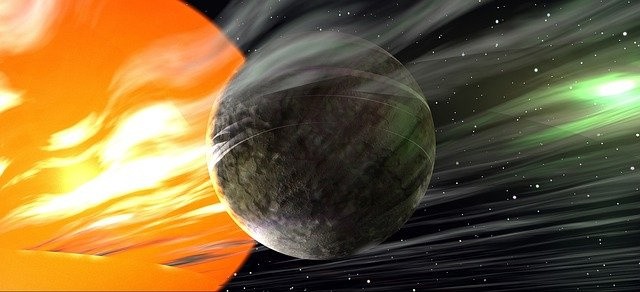
One of the indicators that life on other planets, like exo-worlds, exist is the presence of methyl bromide gas based on a new suggestion by scientists. Plant life is the only source of this gas; if there is any, this gas is emitted.
Possible Life in Other Planets
A new study from the University of California Riverside says that this gas found on earth is a by-product of a plant's defensive mechanism, reported Science Alert.
Methylation is the defensive process that allows plants to expel foreign toxins, including bromide, by linking a sequence of hydrogen and carbon atoms to them, thus changing them to gas and enabling them to break free into the air.
This gas provides a fascinating life from other planets' perspectives. It holds several significant benefits over the other potential biosignatures if something shows up in an exoplanet's atmosphere, and it was used as an insecticide until the 2000s, noted Universe Today.
Initially, it seems to have a limited lifetime in a planetary system or exo-worlds. It is highly significant for exoplanet investigations because it implies whatever process generates the gas is most likely still active. Its existence is not simply due to a geological event that happened ages ago.
A second benefit is that all astrobiologists adore seeing, and only a few non-biological procedures generate the gas, even though those systems are not commonly typical, citing the Morning News.
Aspects of Methylation
Notwithstanding methyl bromide gas is considered a potentially dangerous compound, chemical solvents have been manufactured in large quantities to be used as a pesticide before being controlled due to its adverse health consequences.
A positive side is that it has a comparable spectroscopic frequency to methyl chloride, another gas produced during the methylation procedure, and a biosignature.
Their consolidated signature may make them far easier to identify from so far away, both of which are reflective of the presence of a biological function, being capable of distinguishing between methyl chloride and methyl bromide since methyl chloride has been seen around certain stars, which an inorganic procedure has probably triggered.
Maybe not a benefit, but rather an intriguing peculiarity about the ability to detect the dangerous gas that would be comparatively hard to detect in upper orbit from very far away.
Even though the sun breaks atmospheric water molecules into compounds that eliminate plant defense gas whenever its concentration is sufficiently high, it rarely remains in the upper orbit for long.
Search for Biosignatures in Exo-Worlds
Yet, UV light is only an issue for stars identical to the sun. In the presence of stars like M-dwarfs, which are ten times more prevalent in the galaxy than sun-like stars, the amount of UV radiation would conceivably separate the methylated molecules.
Unfortunately, any discovery may need to hang tight for a while. Even the James Webb Space Telescope is still not ready to find minuscule quantities of atmosphere around an exoplanet.
Equipping terrestrial telescopes with this capability will take a few more years, as astrobiologists will have to wait until such a biosignature is found. Finding methyl bromide gas in exo-worlds proves that life on other planets does exist, which is one way to verify a live world.
Related Article: Remains of Ancient Marine Animals Deep in the Sea Can Influence Movement of Tectonic Plates
© 2025 HNGN, All rights reserved. Do not reproduce without permission.








